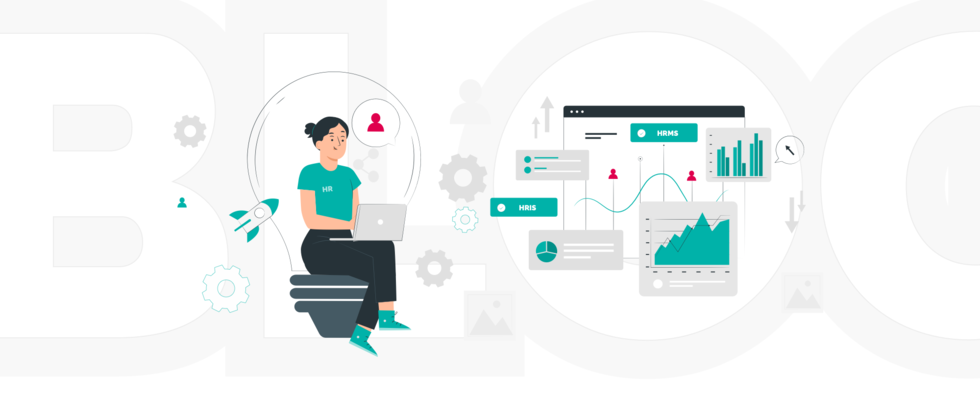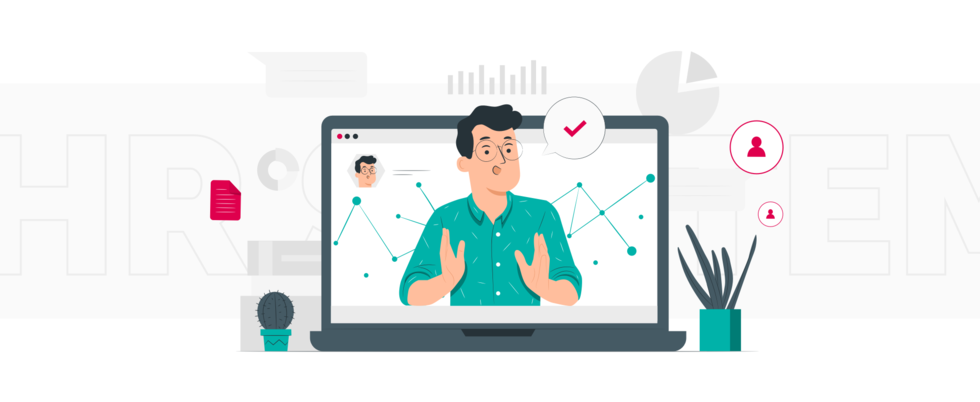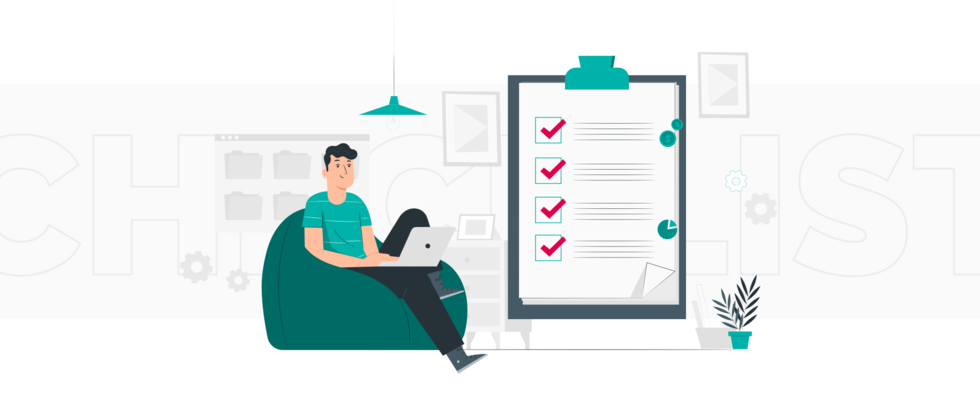12 Essential Features & Requirements for Human Resource Software

Bohdana Muzyka
Lead Business Analyst at TechMagic. Hospitality expert. With a background in Project Management and QA, mentor and speaker. Passionate about Business Analysis and Product Design.

What are the main requirements for HR management software (HRIS and HRMS)? Read about the 12 essential features of human resource information systems in this article.
The transition from an industrial to an information society is coming to an end. The old ways of managing an organization lead to stagnation or the loss of money and place on the market. Only those companies that have implemented automation solutions can compete.
For example, did you know that every third HR specialist blames lack of automation for the inability to create optimal strategies for onboarding new employees? There are also problems in the search for personnel associated with the insufficient implementation of technologies. This is why companies actively implement HRIS and HRMS. Let’s find out about HR system specifications and features such software solutions should have.
How Do Must-Have Human Resource System Features Appear?
Today, many companies already have a ready-made software solution for automating work processes in the HR department, but updating its existing functionality is an integral part of the growth and development of these companies.
Of course, there are some default features: employee database, financial management for payroll, vacations and holidays management, etc. Nevertheless, in addition to this minimal functionality, growing companies often need more advanced capabilities, for example, related to performance assessment and the search for new promising employees. And that explains the growing need for new HR system features.
HR System Features: How Do They Depend on Software Type?

There is a general HR software requirements list, but there are also specific ones that depend on particular tasks. Below we propose to contemplate the types of HR solutions, and in the next paragraph — consider their typical features.
HR system
The HR system is a collective term for more specific solutions like HRMS, HRIS, and HCM. Below we will explain the specifics of each of these abbreviations. Still, for now, we note that HR systems are usually called start-up solutions to help recruiters in companies from the small business segment.
HRIS (Human Resources Information System)
This is a system that helps HR department employees automate their routine processes. The main features of a human resource information system include:
- maintaining statistics and employee base;
- drawing up reports;
- calculation of vacations and sick leave;
- overtime accounting;
- creation of meetings, events, etc.
In general, HRIS system features can be considered a basic set of functions and identified with the broader concept of the HR system.
HCM software (Human Capital Management software)
HСM has fuller functionality than the ordinary HR system, including the ability to dynamically generate salaries (including taxes), as well as time and labor management features that imply managing employee work schedules, deadlines, etc.
HRMS (Human Resources Management System)
As for features of a human resource management system, this type of software solution contains all the same as standard HCM, as well as additional talent management modules related to retaining, career planning, salary increases, etc.
Checklist of Main HR Software Requirements

Formally, we can divide all the features of HR systems into four global blocks. Let's talk about this below.
Payroll and benefits
This is standard functionality responsible not only for automatic payroll calculation but also for overtimes, vacations, absenteeism, taxes, insurance, and other nuances. Thus, the system minimizes the influence of the human factor and simplifies the tasks for the accounting department.
Employee development and performance
Even experienced employees of the HR department find it difficult to keep records of all personal labor achievements of employees, which imposes specific issues on drawing up an objective plan for the career growth of each of them.
And vice versa: integrating the automated resource management system into the HR department workflows will help systematize all the data that is important for assessing the potential and achievements of a particular employee and make the right decision based on them.
Compliance
The HR department is also responsible for ensuring that the company's activities comply with the existing provisions of the employment law and other regulations (for example, it helps investigate work-related injuries and conflicts between superiors and employees). In practice, this is not an easy task as it requires collecting unstructured information from multiple sources. In turn, HR systems minimize manual intervention in these processes and generate reports within minutes.
Organizing and analyzing
Reporting is needed not only to investigate cases of non-compliance with labor laws but also for other company departments, in particular, the accounting department. Also, this category of functions often contains tools for generating analytical and predictive data that are important for the further development of your business.
Key HRIS and HRMS Software Features
Generally speaking, the terms HRIS and HRMS are often used interchangeably. However, they have one key difference: the second version is advanced, and HRMS software features also include employee retention and engagement opportunities. We reviewed these features last in the list.
Management of employee information
This feature is usually implemented as a database of employees, which includes their personal and contact information, positions, rates, vacations, etc. There are also automation tools that allow XP department employees to perform various operations with this data.
Company documents management
This is also a database but created, as a rule, for employees of other departments. In particular, it may contain legal provisions necessary for work, manuals, reference books, safety guides, etc.
Applicant tracking system
This database stores information about applicants for specific positions, open and closed vacancies, status and results of interviews, expected salary and internship, etc. Often this module is integrated with third-party solutions for the analysis and assessment of candidates.
Salary and benefits administration
Many HR systems also provide capabilities for salary management and changing the status of their transfer. The most advanced solutions open up access to this data for employees, which in the long term increases their motivation and stimulates professional growth.
Learning and professional development
Educating employees means developing their professional knowledge, skills, and abilities to help the company achieve its goals. Advanced HR systems contain tools that allow employees to go through the training process remotely (and independently) and test their knowledge.
Absence management
Some software solutions for recruiters include tools for managing vacations, business trips, absenteeism, sick leave, overtime, etc., automatically recalculating the salary for each employee.
Compensation management
These tools display the extra payments history and manage the taxes, insurance payments, etc. Usually, these features are integrated with software solutions for the accounting department.
Talent management (optional)
It is a set of tools for retaining high-performing employees and creating the optimal conditions for them to feel satisfied with their work. The main ingredients here are assessment, coaching, mentoring, and succession planning. These tools are optional and can be considered as human resource management software features.
However, we note that all today's market leaders have already switched to talent management as the only possible way to retain and develop their employees (we are talking about such giants as Google, Facebook, Apple, Intel, etc.) So, you can draw your own conclusions.
Future of HR Software
Finally, let's find out which trend technological concepts can modernize and improve existing HRMS and HRIS system requirements.
- Goal orientation. Providing employees with the ability to track the progress of work and non-work goals within their accounts significantly optimizes productivity and increases motivation.
- Artificial intelligence. AI can be integrated at all stages of interaction with company employees — from automating the recruiting process to providing a personalized experience into the company’s hardware.
- Gender sensitivity. The number of people with a non-binary sexual identity grows every day in the world. To make their work within a particular enterprise as comfortable as possible, it is better to integrate a gender-neutral manner of communication.
- Effort accounting. To make each of your employees feel valuable to your company, you can automate reward processes without having to wait until the end of the month or any other border date.
- Personalized capital management. To optimize your employee retention strategies, it makes sense to provide each of them with information about the formation of their salaries and the prospects for their possible growth.
TechMagic’s Experience & Cases

TechMagic has a long history of developing turnkey HRMS and HRIS solutions and operating with cutting-edge tools such as Node.js, Angular, React, AWS, and Salesforce. We care about creating a visually appealing and intuitive UI, as well as providing scalability and interoperability of our products. As for HR system features, we implement both trivial capabilities, for example, managing employee data, and specific ones, like tools for employee engagement, training management, onboarding new personnel, attracting new talents, etc.
Feel free to read more about our case studies on HR-tech products we’ve built:
- Good & Co is an application in mobile (native) and web (based on Angular) versions that automates the process of selecting candidates for a specific position;
- PeerPilot is a solution for automated selection and assessment of candidates, where we separated the personnel management system from the recruiter's interface;
- UNIVERSUM is a dockerized solution based on AWS architecture and made for evaluating, attracting, and retaining current and future employees.
Learn more about our experience in HR software development for the HR niche. If you have finally decided on your business idea and are now looking for a dedicated development team, contact us via this form to calculate the budget for your project.
Conclusion
As you can see, HRMS and HRIS solutions can speed up work processes in your HR department and relieve your recruiters from routine tasks. If you want to modernize an existing solution to the modern HR software requirements or create a new one from scratch, contact TechMagic, and we will assemble a team of the best specialists for you to bring your business idea to life with a minimum budget.



 Software Development
Software Development
 Security Services
Security Services
 Cloud Services
Cloud Services
 Other Services
Other Services
















 TechMagic Academy
TechMagic Academy
 linkedin
linkedin
 facebook
facebook
 twitter
twitter




